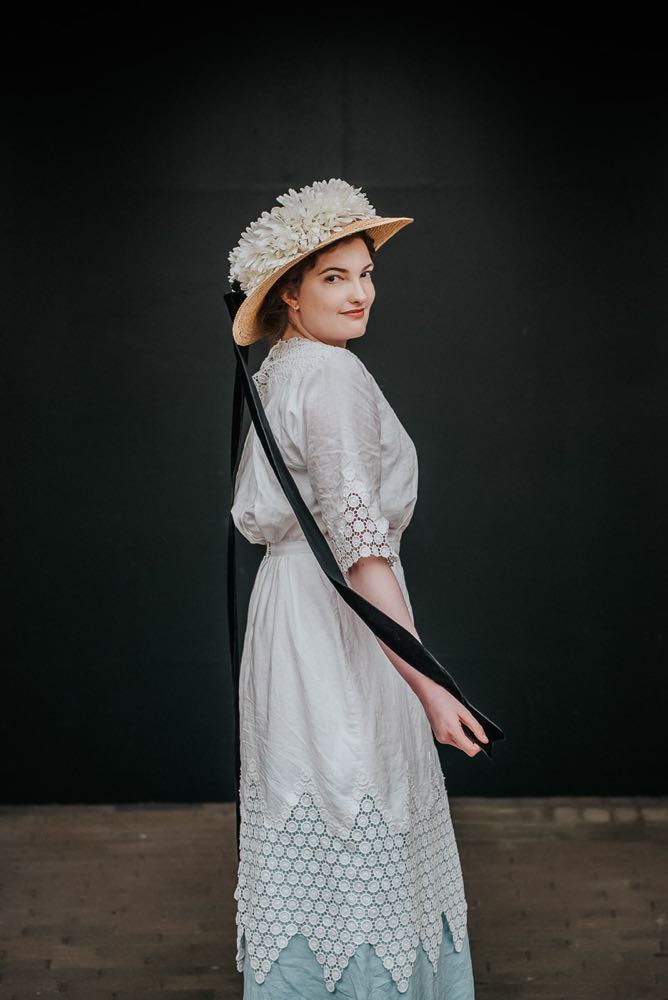The 1910 Little Miss Muffet at the Village Fête frock
Remember when Felicity was extremely helpful with my sewing? What she was mainly helping me with was this dress, which I am calling the ‘Little Miss Muffet at the Village Fete’ frock. First, the name of the dress. I’m sure you’re wondering. I have an elaborate and complicated mind, but this one isn’t too odd once I explain. I first fell in love with the lace for this dress, because each little circle reminded me of a spiders web. I like spiders! The obvious person to wear a dress covered in sweet spider-web lace would be Little Miss Muffet, all grown up and over her fears. I first sewed the lace as a straight line, but it was boring and lacked dimensionality, so I cut it in dags, which remind me of the bunting you see at summer fêtes. So it’s a dress for Miss Muffet to wear to the fair! The dress was inspired by ca. 1910s ‘lingerie’ frocks and linen dresses such as this one from FIDM, and this one and this one …


